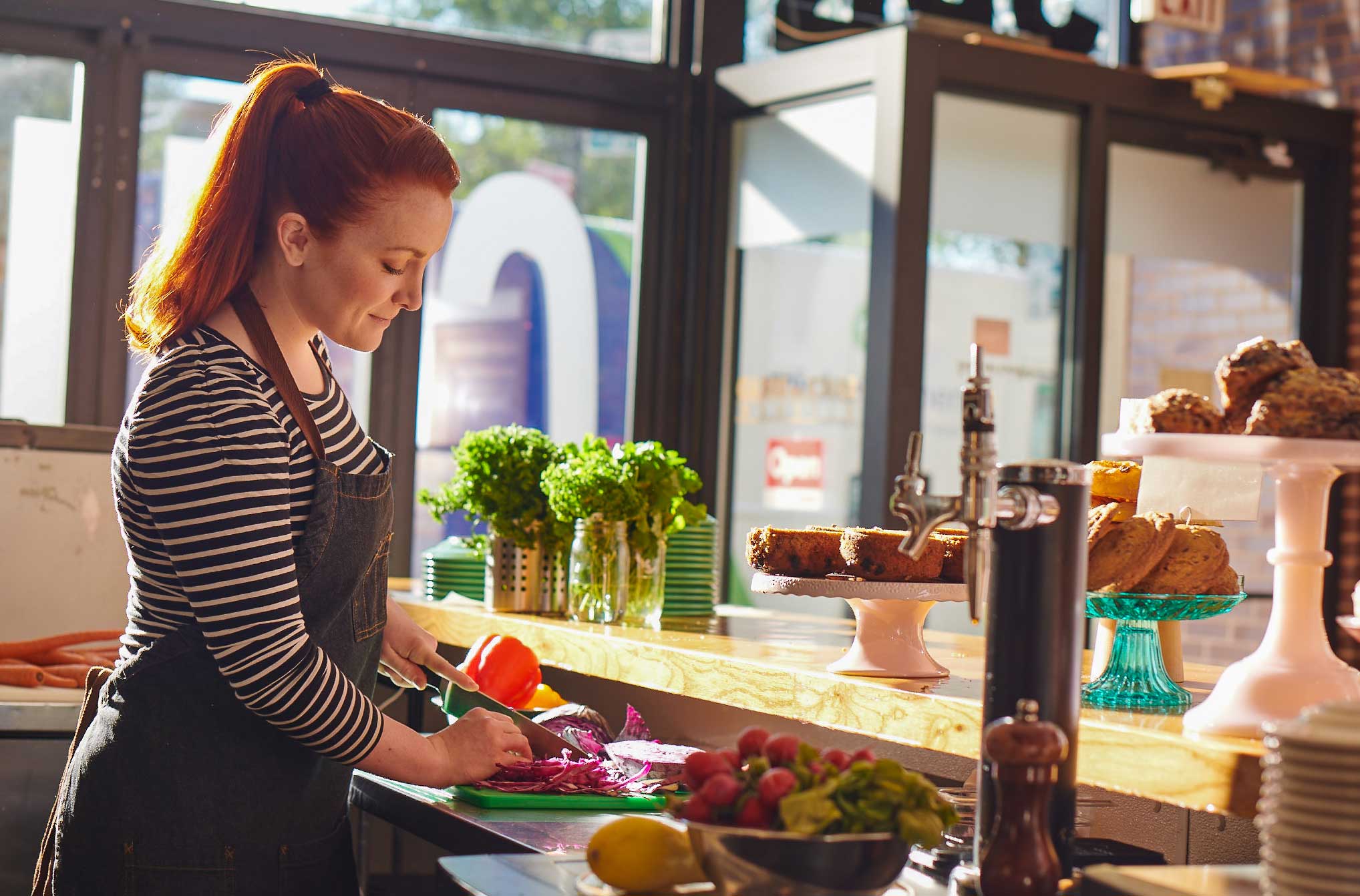Sign up for restaurant insights
Food trucks have evolved over the past decade — they started as a fun trend, but they’re now a staple of the food-service industry. In 2023, more than 36,000 food trucks were in business across the United States. If you’re interested in starting a new food venture or expanding an existing establishment, a restaurant on wheels can be a cost-effective option.
Ready to move forward? Before you start shopping for vehicles, make sure you understand exactly what it takes to start a food truck restaurant.
Food truck restaurants: what you need to know
Food trucks seem simple on the surface — you choose a menu and start serving delicious treats. The reality is more complicated, so it’s important to understand the practicalities that are involved.
Securing licenses and permits
Like any type of food-service business, a food truck restaurant requires the right permits and licenses. Regulations vary by city and state; check with your local health department and business development office for specifics.
Common requirements include:
- Driver’s license
- Business license
- Health permit
- Seller’s permit
- Food handler’s permit
- Food service license
- Food seller permit
- Catering license
- Mobile food facility permit
- Liquor license
- Employer identification number (EIN)
- Fire certificate
Depending on how and where you plan to park your food truck, you may also need a parking permit and a special event permit or license. If you use a commercial kitchen to store and/or prepare your food, you’ll likely need a mobile commissary agreement.
Choosing a food truck
The food truck model you choose can make or break your business — so while it’s tempting to snag the first one you find on Craigslist, it’s important to do your research.
To start, decide what type of vehicle or food truck rental you want. You can opt for a self-driving vehicle, a small rolling street food cart or a separate food trailer you can pull with a truck. The option you choose will depend on your budget and the type of food you plan to serve. You can sell gourmet ice cream sandwiches from a freezer cart, but freshly prepared hot food will probably require a trailer or truck.
As you evaluate different vehicles, consider the following factors:
- Budget. Determine how much money you have to spend on a food truck restaurant. CNBC estimates that it costs an average of $100,000 to open a food truck, including buying a vehicle and getting permits, insurance, supplies and equipment.
- Condition. Based on your budget, decide whether you want a new or used food truck. According to Square, new trucks can cost between $75,000 and $150,000, while used trucks cost between $40,000 and $80,000. As you estimate costs, make sure to factor in renovations and licensing. In some cases, it’s more cost-effective to buy new; you might also have an easier time finding financing and insurance.
- Space. Your food truck must have enough room to store and prepare food. If you choose a smaller truck, you might need to bake bread or do other prep tasks at a commercial kitchen and use the truck for service only. Lay out a basic floor plan before you start searching; it can help you determine the baseline square footage and approximate dimensions.
- Required renovations. Determine what renovations you’ll need to complete to get the food truck up to code. This is especially important if you’re converting a vehicle that was used for a different purpose.
- Hookups. Food trucks usually require electric hookups to power lights and appliances. Refrigeration is key, especially if you’re serving cold items such as Greek salad, craft beer, cocktails or fresh garnishes such as lemon, red onion and tomato. You might also choose a model with propane hookups if you prefer to cook with gas. The options you need will vary based on your menu and any expansions you want to make in the future.
- Accessories. Look for trucks that have or are compatible with the accessories you need — an awning or exterior lighting, for example.
Developing a menu
Next to securing and renovating the vehicle, developing a profitable menu is the most important part of starting a food truck business. In general, it’s best to choose a limited selection of high-quality, delicious food. Consider where and when you’ll be serving customers, and choose items that will appeal to customers in that environment. For example, the average person might want lighter items at lunch and richer flavors in the evening. You can also set a theme, such as vegan food, fried chicken dishes or Thai cuisine.
To make the most of your storage, choose menu items that share common ingredients or use foods that can be prepared in bulk, such as cookies or macaroni and cheese. Because diners will be waiting in line outside the truck, it’s usually best to pick meals you can prepare quickly. Examples include grilled cheese, burgers, waffles, street tacos, hot dogs and pulled-pork sandwiches.
Don’t forget about your restaurant menu design; it helps customers get a sense of your food and identify dishes they want. A clean, uncluttered, and easy-to-read menu helps you stand out, especially when you’re operating at events with the best food trucks in the area.
Marketing your food truck
When your food truck is ready to roll, start spreading the word. Social media is a great tool; you can post in real time to update followers about where you’ll be next. Email marketing can also be useful, especially if you have different locations or daily specials.
Posts that can attract attention include:
- Photos of your food truck and menu items
- Photos of the food truck in beautiful or exciting locations
- Video reviews from actual customers
- Images of the menu
If you’re parking your food truck at local events, don’t forget to mark your location or tag the organizers to help customers find you. You can also use event-specific hashtags to build awareness.
Benefits of operating a food truck
With all the work it takes to open a food truck, is it worth it? For many restaurant owners, the answer is yes. Food trucks offer unique benefits that set them apart from traditional establishments.
Benefits of being a food truck owner include:
- Flexibility. In a food truck, you’re not tied to one location. You can rove around town as zoning requirements allow and attend a wide variety of food truck events. Some food trucks even serve as caterers at weddings and other private gatherings.
- Reasonable start-up costs. Compared to a brick-and-mortar restaurant, food trucks cost less to start. Because you’ll have fewer employees to pay, it’s easier to control expenses.
- Low overhead. Payments and insurance on a food truck are usually cheaper than a commercial property, which means you can operate with a higher restaurant profit margin.
- Affordable advertising. Food trucks typically rely on free or low-cost social media advertising. If you’re participating in events, the marketing materials will often include your business’ name in marketing materials for no extra fee. Plus, your food truck is an advertisement in itself — just make sure to include your website URL or social media handles.
- Easy payment processing. As an owner, you can decide which forms of payment to accept. With a convenient mobile payment processor, customers can tap their cards or phones to reduce transaction time and help the line move faster.
Use Grubhub to market your food truck
Whether you’re serving burritos or cheese fries, the success of your food truck restaurant depends on reaching the right customers. Grubhub can help you build brand awareness. With Grubhub for Restaurants, you get specific help from a dedicated restaurant success manager who can assist with your restaurant goals and get your food truck in front of local diners.
Sign up today to get your food truck on the right road.





